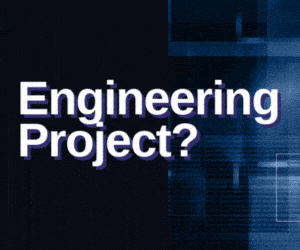Building on the power of R&D, Parova Technologies offers customised design and development services for drones, aiming to develop a city-to-city drone network. Founder Rohith Dacharla unfolds their budget-friendly approach to support startups and students to EFY’s Yashasvini Razdan.

Q. How did you start Parova Technologies?
A. In 2017, during my final year of college, my passion for aerial vehicles, nurtured through my involvement in the NCC Air Force Wing, led me to explore modelling games and actual flying experiences. Wing Commander Vimala was my commanding officer. Despite my initial desire for private pilot training, financial and family constraints redirected me towards computer science. After three years, I realised that pursuing computer science would not get me anywhere close to my dream, and I dropped out to pursue my own research. Setting up a small room as a makeshift lab, I delved into drone concepts and soft robot structures. I started with small college projects and bootstrapped our company. During component procurement, I met Venkatesh, who became my co-founder and handled technical aspects. He complemented my role in industrial design. Despite lacking mentorship, we filed patents for propeller designs, eagerly awaiting funding. The government’s support came late due to COVID-19, and despite missing out on seed fund grants, we secured foreign investors.
Q. When did you set up your lab?
A. I set up the lab in 2017 and registered the company in 2019, offering our design and development services.
Q. What prompted you to set up this company?
A. Our primary goal at Parova is to establish a network of commercial logistic aircraft for drones, fostering sustainable and on-demand logistics in India. You see, the logo is a flying fish which flies above the water surface to avoid predators and maintain stability. We aim to replicate this concept by building a network of drones connecting cities, instead of focusing on a single drone for long journeys, for city-to-city transportation.
Q. How do you intend to achieve that goal?
A. Building drones involves significant expenses and requires extensive research and development (R&D) and technical support. To build on our R&D capabilities, we provide customised drone development services. We design drones based on their ideas, considering initial requirements, and provide the option of choosing between affordable imported components or entirely made-in-India products. Our commitment lies in promoting locally manufactured products on our platform for enhanced efficiency.
Q. Who is your targeted customer profile?
A. Startups, college clubs, and university students comprise the majority of our clientele, as they lack the extensive knowledge and time to delve into the intricacies of vehicle development.
Q. In this whole ecosystem, where do you place yourself? Do you classify yourself as an independent design house or a design services provider?
A. No, we are not an independent design house. We are primarily a design and development service provider that creates physical prototypes of drones. While our focus is on design and development, not all products require starting from scratch. For instance, some clients may have a standard hexacopter or quadcopter with an X configuration available from multiple sources but require modifications, material changes, budget adjustments, or branding. In such cases, we provide product development services tailored to their specific needs.
Q. Can you give me an idea of all the services that you offer?
A. Currently, we operate as a service rather than focusing on selling a specific product. Our emphasis lies in custom unmanned aerial vehicle (UAV) design. Some customers, particularly those seeking drones for purposes like agriculture, prefer consulting services. We assist them by presenting options within their budget and charging for assembly services. This consulting aspect is a distinct service we provide. On the other hand, we also engage in building drones based on individual requirements. Clients share their needs, and we manufacture them in our research lab. We charge for components, design, R&D, and any additional requests, such as moulds. Essentially, our approach involves charging for project development and product outsourcing. Furthermore, universities or colleges often approach us to establish drone excellence or research facilities. We also conduct workshops. While these activities contribute to various revenue streams, we do not explicitly showcase them as part of a process. Instead, we consider them integral to our ongoing research efforts, which require substantial funding.
Q. What exactly are you fabricating?
A. As an example, I would like to tell you about a drone we fabricated entirely from 3D-printed components using recycled ocean plastic. Initially, we had a client with a specific request to demonstrate the feasibility of constructing aircraft structures from these recycled materials. We conducted the necessary R&D and designed the drone. The collected ocean plastic was converted into pellets, which were then transformed into filament. This filament was used in the 3D printing process to fabricate individual components, which were later assembled. Some customers, especially those with commercial, government, or defence needs, may require military-grade or fully reinforced carbon fibre materials. On the other hand, customers from universities or research labs may seek budget-friendly options, foregoing carbon fibre for materials like aluminium rods or epoxy plates. Our approach is tailored to each individual client.
Q. What do you offer through your consultancy services to your customers?
A. Some companies lack the expertise to procure products or identify the best companies to fulfil their requirements, especially if they are not well-versed in drone technology. In such cases, they hire us as consultant partners. We understand their needs, reach out to various companies, and present a budget proposal. We assist them in making informed decisions, offering alternatives based on their budget constraints. As technical partners, we guide them through the process, especially if they are unfamiliar with aspects like thermal cameras or logistics. If needed, we provide training on drone usage, usage scenarios, and surveys. Our consultation services come with associated charges.
Q. Out of all the services you offer, which takes up the bulk of your orders?
A. The distribution of business varies depending on the client and their specific needs. It is challenging to pinpoint a single service that dominates the majority of our business, as each project is unique and tailored to the client’s requirements. I could mention that our primary focus is on customising and developing drone prototypes. However, the budget constraints from clients, often college clubs, aeromodelling clubs, and startups, tend to be relatively low. While there is not a specific emphasis on tracking which service generates more revenue, drone development, including applications like flower showering at events or political rallies, tends to be a frequent request.
Q. What makes your service different from what others offer?
A. A common issue with the industry is its limited focus on multiple concepts or technical aspects. For instance, some may specialise in multicopter technology or participate in aeromodelling events, yet they lack integration and struggle to offer comprehensive R&D services. In contrast, we use components sourced from various places, including China. Many drone companies in India are, in essence, assembling drones in India rather than making them.
Q. So, would you say your USP is ‘made-in-India’ products by sourcing components from India?
A. We also offer that service. However, we cannot mandate our customers to source all components from India, as it might incur higher costs compared to actual importing. Therefore, we place most of the component sourcing decisions in the hands of our customers. We provide the option for a completely ‘made-in-India’ product, encouraging them to promote the origin. If they already have specific clients or requirements that necessitate sourcing from other countries, such as a motor from a Japanese company, we are open to accommodating those specifications. There is no issue if they choose to include foreign components; it ultimately depends on their budget requirements.
Q. What is special about your design process?
A. In terms of design, it is akin to general drones, including hexacopters with various geometric elements. However, what sets apart the one I am presenting is its budget-friendly approach. Our client specifically requested a cost-effective solution to showcase for defence purposes, and we are handling the research and development outsourcing for them. In this design, instead of using entirely carbon fibre, we opted for budget-friendly materials. To meet our customers’ requirements, we incorporated epoxy plates in between, reserving carbon fibre rods only where necessary. Even when procuring components, we exclusively sourced them from Indian manufacturing companies, including those involved in motor production. This approach aligns with our commitment to using locally made components in the manufacturing process.
Q. Can you explain the process flow when a company approaches you for services?
A. In case a company approaches us with no specific idea or lacking technical details, we guide them through the entire process, designing drones based on their requirements, conducting physical tests, and providing training. If licensing is needed, we connect them with relevant authorities and offer training on usage protocols. Charges are comprehensive, covering design, testing, training, and any licensing assistance required. In case of a complete product, we provide procurement assistance, gather technical details, offer consultation on potential upgrades and extra charges on the imports and assembly for the same. For a company with a semi-formed idea, we help them understand their requirements, components, and pricing, discussing the option of importing versus local production. These diverse approaches cater to the specific needs of startups, ensuring they receive tailored services based on their unique product or service visions.
Q. Who owns the IP for these drones?
A. Regarding intellectual property (IP) independence, when companies approach us for drone manufacturing, they may provide specific patent rules and ask us to manufacture drones based on those patents. The patents are primarily for our internal use. Our clients typically do not request us to file patents for them. They come to us with their ideas, and we provide support by conducting the necessary research and development work and fulfilling any hardware requirements. We charge for these services based on the scope of the project. However, we have never obtained licenses for these patents as our primary focus is on our own research and development for our vehicles, which we typically keep confidential. Whether the IP work is conducted by the companies themselves or by us on their behalf, we handle such projects accordingly.
Q. What are your main projects right now?
A. We are currently focused on developing the first version of our commercial logistics vehicle, a 100 kg payload UAV with vertical takeoff and a fully electric engine. Simultaneously, we are exploring hydroseal innovations with certain companies, and we are assessing the feasibility of implementing these innovations into UAVs. Multiple research projects are underway, and we are open to collaborations and insights from these institutions. Our primary goal revolves around the development of Bajrang.
Q. Could you tell me more about Bajrang and what it is?
A. Bajrang introduces a concept for efficient logistics by deploying drones for swift transportation between cities. In this setup, drones exchange shipments at an intermediary point, returning to their respective cities. The final delivery is managed by ground partners or collected from drone ports. The service targets companies like Amazon, Flipkart, medical services, and postal services for prompt deliveries. Unlike direct-to-customer drone deliveries, the emphasis is on building a network of drones, creating a balance between ground-level operations and high-altitude flights. This network aims to overcome challenges in traditional long-distance deliveries and address limitations in densely populated countries like India.
Q. Are you still in the design phase of Bajrang?
A. Yes, we are in the design phase and are testing it using balsa wood and other materials. Once the design is finalised through these tests, we plan to transition to carbon fibre.
Q. Why do you need to transition from balsa wood to carbon fibre?
A. This shift is necessary as balsa wood is not suitable for commercial or production purposes. Balsa wood is a lightweight material commonly used in aircraft construction due to its flexibility, lightness, and strength. It is particularly suitable for building model aircraft. In the case of these designs, balsa wood is utilised for its ability to be shaped accurately. While balsa wood is delicate and prone to damage upon impact, it is still preferred for creating intricate structures.
Q. But these wooden prototypes cannot actually fly, can they?
A. These aircraft can fly, but their durability is not comparable to that of materials like carbon fibre. Hence, we are currently testing them using balsa wood. The advantage of balsa wood lies in its flexibility for tinkering and modifications during the design phase. This allows us to make adjustments easily without requiring a complete overhaul. Once the design is finalised, we plan to transition to carbon fibre, but this process involves expensive moulding. To mitigate costs, we are exploring government grants and private funding options. We have submitted applications for various schemes and are awaiting responses to determine the extent of support from both government and private entities.
Q. Could you give me some examples or use cases where you have come up with a unique amendment/innovation in the design that the customer provided?
A. This happened with us in the case of propellers. We were focused on enhancing efficiency. Recognising MIT’s work in propeller design and vertex generation, we delved into research articles to explore improvements. Engaging interns from various schools and colleges, we embarked on designing and simulating propeller patterns. The outcome was a design that exhibited more efficiency than conventional propellers. The key innovation lies in introducing ridges on the propeller, guiding airflow in a specific direction. While the concept is straightforward, its implementation on a propeller resulted in a propulsion efficiency boost. This design, though seemingly simple, could potentially revolutionise commercial aviation by significantly improving efficiency and, consequently, generating billions of dollars. Currently, discussions are underway with the National Aerospace Laboratories (NAL) team in Bengaluru to explore testing possibilities, as our in-house capabilities may not be sufficient for comprehensive testing. Additionally, potential collaborations with Q Plane are being considered, but these initiatives are still in progress, and we await further developments.
Q. Who are your partners in this journey?
A. Partnerships are essential for our long-term vision, but at the current stage, our main focus is on R&D. Once we finalise our Bajrang MK1 and establish a confirmed budget, we may explore potential partnerships with other companies in the future, but that is not our focus at the moment.
Q. Are you engaged in partnerships for sourcing components or manufacturing?
A. Sourcing components and working with clients involve non-disclosure agreements, preventing us from disclosing specific details. However, certain organisations, such as Shooter Drones, universities like SRM, and various college clubs, indirectly seek our assistance. In such cases, we establish agreements before initiating any work to clarify terms and conditions. While we cannot solely rely on one company, we are flexible and adapt to changes in prices or requirements that may vary with each collaboration.
Q. What are your plans for expansion?
A. While Bajrang represents the ultimate goal, our immediate focus is on exploring potential collaborations with companies specialising in telecommunications and long-range transmission. The aim is to engage in Technology Transfer (ToT) agreements, to streamline our research and development efforts by incorporating their designs or technologies. This involves entering into an MoU (memorandum of understanding) or patent licensing arrangement, enabling us to implement or manufacture their technologies on their behalf. We have received proposals from global companies seeking manufacturing facilities in India, and we are open to facilitating and operating such facilities for them. We are actively considering proposals from overseas companies looking to establish manufacturing facilities in India, leveraging our expertise and contacts in the region to support their initiatives.
Q. What kind of challenges did you face while trying to establish and run a design and development services startup?
A. In design and development, entrepreneurs face challenges in the technical realm, particularly in the procurement of components. Clients may deviate from established protocols, attributing issues to us later. This is common across industries, including automobiles. Entrepreneurs also encounter challenges with companies promising grants, emphasising the need for initiatives like the EXIF program to safeguard startups. Distinguishing genuine companies from those collecting funds without delivering becomes crucial. Many startups, especially from rural areas, invest but face disappointment. Caution is advised in selecting mentors and advisors, as the market is saturated with individuals offering free advice. Valuable guidance often comes at a cost and is not readily available for free.





